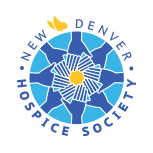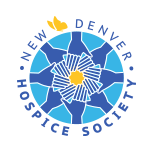HOPE
This is adapted from a piece originally published in the 2007 newsletter from the Callanish Society in Vancouver, BC. Callanish is a non-profit organization providing retreats and support for people living with cancer, and their families. Sandy Kalmakoff died of cancer in her 30’s and felt that living with uncertainty forced her to engage with both hope and hopelessness.
What is hope for me? Hope seems continually to redefine itself. At first I hoped for a cure. Sometimes I hope for remission, or a longer life. I hope for symptom reduction, for enough better days that I will be able to do more of what I enjoy, or simply for some sign that things are not getting steadily worse. Often hope is about something less specific, more abstract. I hope for calmness of mind and openness of heart as I make this difficult journey. I hope for reconciliation and peace in the face of death. I hope for strength and acceptance for my family. Each form of hope has its time and place, and I find myself holding first one, then another, cycling through them as the days go by. The important thing is the feeling of hope itself, which I understand to be, more than anything else, an attitude of mind, one that allows for a kind of quiet cheerfulness and a standpoint of receptive expectation. Whatever the outcome for me, I’d rather live my life this way, in a state of hope, than the other way, in fear and despair.
I realized that experiencing and expressing every nuance of grief, fear and despair was the only way through to real hope; and that hope was necessary if one was to live the rest of one’s life, however short or long, as fully as possible.
Sometimes the tender green shoot of hope starts to wilt. I rush in with my watering can—I open my senses to the beauty all around me, to the bounty of colour, taste, sound, scent and sensation that life offers up on a silver platter. I breathe deeply and feel my aliveness—I am alive right now, and it’s a gift, a miracle. I invoke my wide circle of supporters—my family, my friends, my physicians and alternative healers—thinking of all the different ways they are there to help me. I tell myself that this moment is really all I have, and I practice welcoming each one, remembering that ‘wholeness is… essential friendliness with who we are in each moment’—even if that happens to be someone who is feeling hopeless.
For hope does genuinely ebb and flow, and the moments of real hopelessness are just as precious as any others. They too deserve my full attention, y full engagement. My task now—and it’s a daunting one—is to learn neither to push them away, nor to let them trap and overwhelm me, but rather to respond to them with an open heart. Dancing with hope ultimately means both holding hope for the future, whether its measured in years or minutes, and at the same time being willing to face directly the fearful possibilities and acknowledge the reality of one’s situation. I have come to believe that I can’t really be hopeful without entertaining its opposite too; that paradoxically, I must recognize the truth of both perceptions, and dance with them both in the same embrace.


